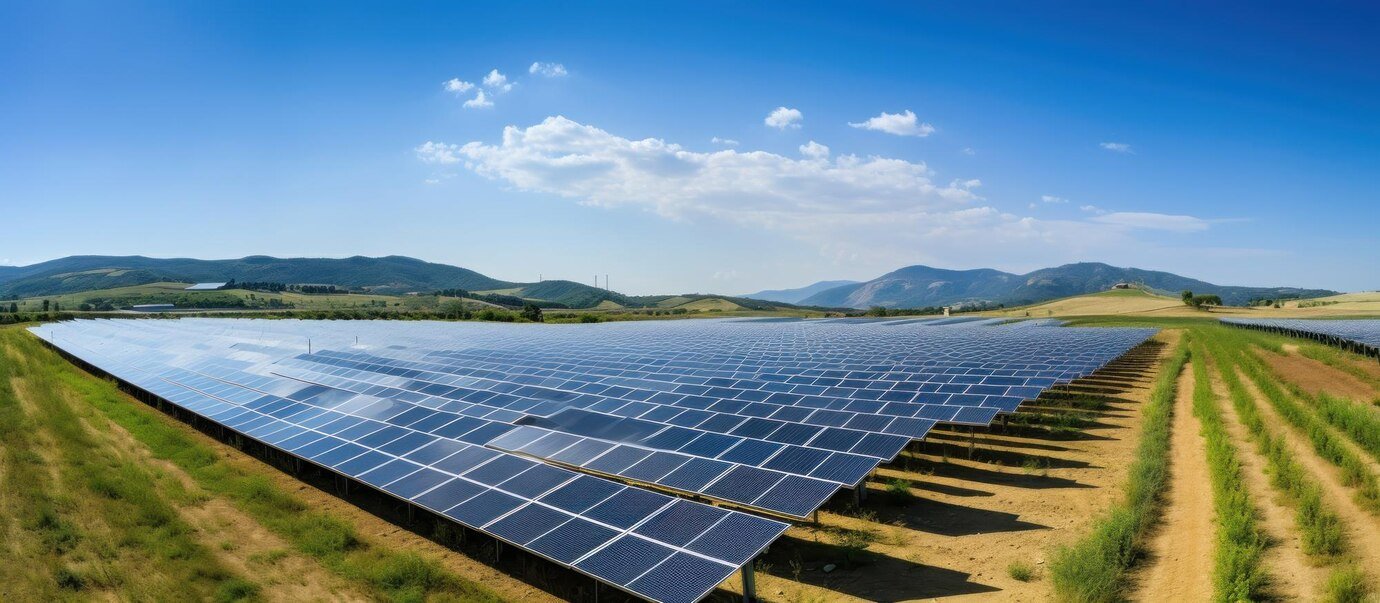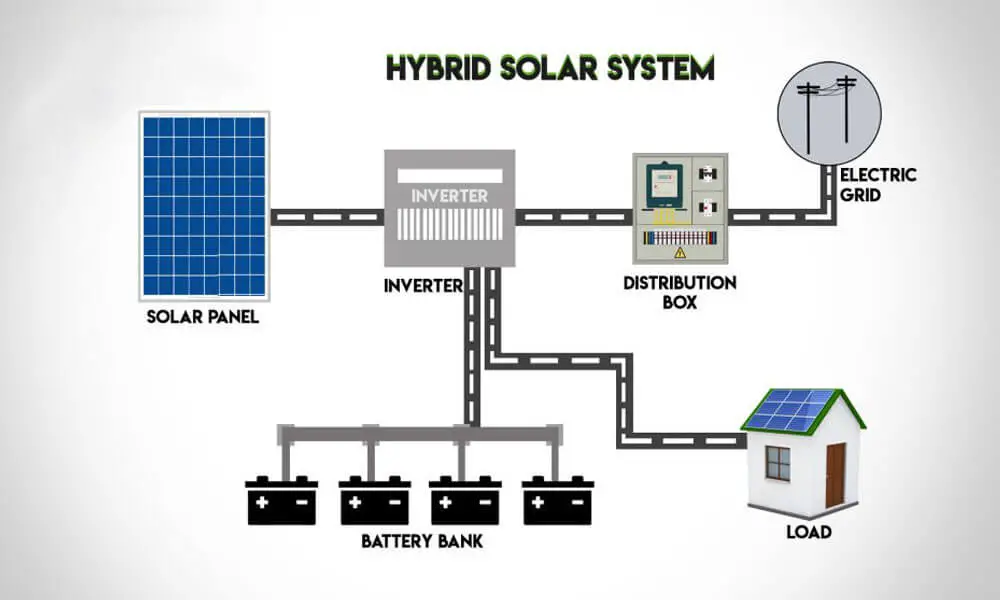Introdction On-Grid Solar System
Welcome to our in-depth tutorial on solar systems by solar sense. Where we explain on grid solar system diagrams, offer on-grid solar system wiring diagram PDFs, and explain the puzzles regarding on grid solar systems in Hindi.
The rise of solar power in the energy landscape highlights human innovation and environmental responsibility. Among solar solutions, on-grid systems are prominent for efficiency, cost-effectiveness, and eco-friendliness. They connect to the grid, allowing net metering to recycle surplus power, appealing to residential, educational, and commercial users.
Grid-connected PV systems, surpassing stand-alone ones in market share since the 1990s, constitute over 98% of solar cell production. On-grid systems, like grid-tied solar setups, do not require batteries, making them optimal for locations with stable grid power.
On-grid systems prioritize solar energy consumption, generating only when needed and exporting excess power. Net meters track energy flow, making it a profitable investment with substantial returns. Overall, on-grid solar systems epitomize a sustainable energy shift, blending efficiency, financial benefits, and environmental impact for diverse user segments.
Elements of On-grid Solar System

On-grid solar PV systems consist of several key components that work together to generate electricity and connect to the grid. The main components in an on-grid solar PV system include:
- Solar Panels (PV Modules): Solar panels, or PV modules, use the photovoltaic effect to transform sunlight into electrical energy. These modules are the central component of the system. Commonly used to make solar panels are thin-film materials or crystalline silicon. The system’s capacity & available space determine the quantity & configuration of panels, taking into account elements like orientation and shading to optimize energy production.
- Inverter: Inverters are essential for transforming DC electricity produced by solar panels into AC electricity used in most residential & business settings. They serve as the connection between solar panels and the grid. There are various varieties of inverters, including power optimizers, microinverters, and string inverters, each with unique advantages in terms of scalability, efficiency, and system monitoring.
- Mounting Structure: This component ensures the secure installation and proper orientation of solar panels to optimize sunlight exposure.
- Grid Connection Equipment: This includes devices like circuit breakers, disconnect switches, and surge protectors that enable safe and compliant connection of the solar PV system to the electrical grid. Grid connection equipment also incorporates anti-islanding features to prevent the system from feeding electricity into the grid during grid outages, ensuring the safety of utility workers.
- Metering Equipment (Net Meter): Net metering equipment, such as bidirectional meters or smart meters, is essential for measuring the flow of electricity between the solar PV system and the grid. These meters accurately record the amount of electricity exported to the grid when the system generates surplus power and the electricity imported from the grid when additional power is needed, facilitating billing and incentive programs.
- Electrical Wiring and Cables: A network of electrical wiring, cables, and conduits connects all system components, ensuring efficient energy transfer and electrical safety. Properly sized and insulated cables, along with weatherproof connectors and junction boxes, are crucial for reliable and long-lasting performance of the on-grid solar PV system.
- Monitoring and Control Systems: Advanced on-grid solar PV systems may include monitoring and control devices or software that provide real-time data on energy production, system performance, and energy consumption. These systems enable users to monitor the health of the system, identify potential issues, optimize energy usage, and remotely control certain system parameters for enhanced efficiency and maintenance.
- Safety Equipment: Safety features are integral to on-grid solar PV systems to protect against electrical hazards, fire risks, and environmental factors. Grounding systems, lightning protection devices, arc fault detection, and equipment enclosures with appropriate ratings ensure the safety of installers, users, and the system itself, complying with relevant electrical codes and standards.

Perspective for the Future and Industry Overview
With a predicted $500 billion investment in renewable energy by 2028, India’s solar sector is booming. India aims to achieve 227 GW of renewable energy capacity by 2022, primarily from solar & wind, & 49% of its electricity from renewable sources by 2040. Through initiatives like Solar Park, VGF, CPSU, Defense, Canal bank & Canal top, Bundling, and Grid Connected Solar Rooftop, the government is propelling this growth. These programs aim to create green towns in every Indian state powered by renewable energy.
On-Grid Solar System Operation:
- Continuous Power Generation: Solar panels in on-grid systems continue to generate electricity during daylight hours. This energy production is directly influenced by factors such as sunlight intensity, panel orientation, and shading.
- Instant Use or Grid Export: The electricity generated by solar panels can be utilized instantly to power appliances, lighting, and other electrical devices within the property. Alternatively, if there is excess electricity beyond immediate consumption needs, it can be exported to the electricity grid.
- No Backup Power for Outages: Unlike off-grid solar systems that incorporate battery storage for backup power during grid outages, on-grid systems rely entirely on the grid for backup. This means that if the solar system runs out of power (e.g., during nighttime or cloudy periods), electricity is seamlessly drawn from the grid to meet demand, ensuring continuous power supply for users.
- Grid-Fed Excess Electricity: Any surplus electricity generated by the on-grid solar system is fed back into the grid. This surplus energy contributes to the overall grid supply and is utilized by other consumers connected to the grid.
Advantages or Benefits of On-Grid Solar System
- Continuous Power Supply Guarantee: On-grid systems provide uninterrupted access to electricity by offering the choice between solar power and the main grid.
- Income Generation Opportunity: Utilizing a net meter allows consumers to track and receive credits for surplus electricity sent to the grid, presenting a profitable opportunity for additional income.
- Increased Savings: During high-demand periods, on-grid solar systems effectively avoid peak demand charges and significantly reduce electricity bills. This translates into substantial savings and enhanced earnings through net metering.
- Favorable Investment Returns: On-grid solar systems offer a favorable investment scenario, with a payback period of around 5 years and decades of free electricity thereafter, transforming the investment into a revenue-generating asset with high returns.
- Efficient Operations: On-grid systems seamlessly integrate with the main power grid, allowing for the efficient utilization of solar power without any limitations on running home appliances. They maximize solar power usage, with a 1 kW system capable of handling 5 kW loads.
- Easy Installation: On-grid systems are straightforward to install, especially on rooftops of residential and commercial buildings, community centers, and various institutions, making them accessible and convenient for a wide range of users.
- Cost-Effectiveness: On-grid solar energy systems have lower installation costs than off-grid systems due to the absence of expensive batteries required.
- Low Maintenance: On-grid solar systems entail minimal maintenance and boast longer lifespans compared to off-grid counterparts, reducing operational hassles and costs over time.
- Government Incentives: Government subsidies and incentives for on-grid solar systems enhance their attractiveness and affordability for users.

On Grid Solar System Drawbacks
One drawback of on-grid solar systems is their dependency on the main power grid. Grid outages render on-grid systems inactive, causing power disruptions despite solar panel electricity generation.
Government Subsidies for Rooftop Solar Panels
The Union Cabinet approved PM-Surya Ghar: Muft Bijli Yojana, allocating Rs. 75,021 crore for installing rooftop solar panels in one crore households. Key points of the scheme include:
- CFA of 60% for 2 kW systems, 40% for 2-3 kW systems, capped at 3 kW.
- Collateral-free loans at around 7% interest for systems up to 3 kW.
- Model Solar Villages in each district.
- Incentives for Urban Local Bodies and Panchayati Raj Institutions.
- Fund for innovative projects and payment security for RESCO models.
- Expected outcome: Addition of 30 GW solar capacity, 1000 BUs electricity generation, & 720 million tonnes Co2 reduction over 25 years.
- Creation of around 17 lakh jobs.
Registration available on https://pmsuryaghar.gov.in.
Solar Net metering process
Net metering credits solar panel owners for excess electricity sent back to the grid. They will deduct these credits from their future electricity bills, effectively reducing their overall energy costs. Net metering encourages renewable energy adoption by incentivizing consumers to invest in solar power systems & supporting grid stability by utilizing distributed energy resources.




